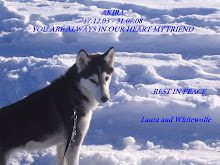 Merry Christmas in many native Languages
Merry Christmas in many native LanguagesAleut: Kamgan Ukudigaa
Western Apache: Gozhqq Keshmish
Aymara: Sooma Nawira-ra
Blackfoot: I'Taamomohkatoyiiksistsikomi
Central Ahtna: C'ehwggelnen Dzaen
Cherokee: Danistayohihv & Aliheli'sdi Itse Udetiyvasadisv
Cheyenne: Hoesenestotse & Aa'eEmona'e
Choctaw: Yukpa, Nitak Hollo Chito
Cree: Mitho Makosi Kesikansi
Creek: Afvcke Nettvcakorakko

Dine/Navajo: Ya'at'eeh Keshmish
Gwich'in: Drin tsal zhit shoh ohlii & Drin Choo zhit zhoh ohli
Hawaiian: Mele Kalikimaka & Hauoli Makahiki Hou
Inupiaq: annaurri Aniruq & Paglaun Ukiutchiaq
Inupiatun: Quvianaq Agaayuniqpak
inupik Jutdlime pivdluarit ukiortame pivdluaritlo!
Iroquois: Ojenyunyat Sungwiyadeson homungradon nagwutut &
Ojenyunyat osrasay
Koyukon: Denaahto' Hoolaanh Dedzaanh Sodeelts'eeyh
Kutchin: Drin Tsal Neenjit Goozu'
Lakota: Wanikiya tonpi wowiyuskin & Omaka teca oiyokipi
Maya/Yucateco: Utzul mank'inal
Metis: Gayayr Nwel

Ojibwe (Chippewa) : Niibaa' anami'egiizhigad & Aabita Biboo
Oneida : Wanto'wan amp; Hoyan
Naskapi: miywaaitaakun mikusaanor
Quechua: Sumaj kausay kachun Navidad ch'sisipi & Mosoi Watapi sumaj kausay kachun
Retvara: Mamaka wejejerãka
Salcha: Dzeen chox teedle 'aay nayilkaa
Seneca: a:o'-e:sad yos-ha:-se:'
Tanaina: Natukda Nuuphaa
Tewa: Hihchandi Núuphaa
Tlingit: Xristos Khuwdziti kax sh kaxtoolxetl
Yupik Inuit, Alaska: Alussistuaqegtaarmek Piamceci!
AHO with the best wishes from Germany
~Whitewolfe~ (U-ne-ga-wa-ya)








































































